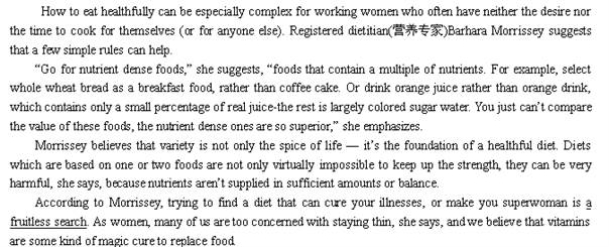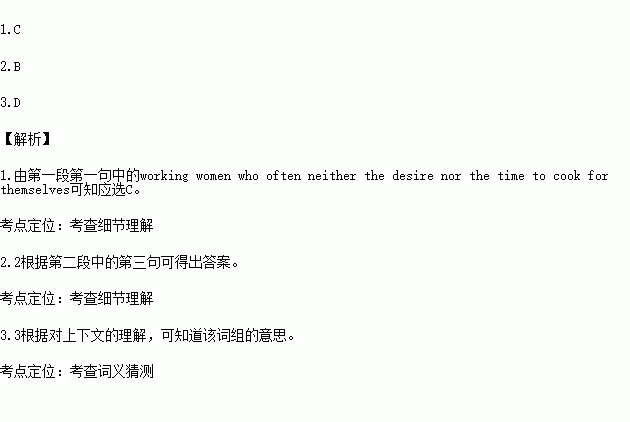题目内容

“We need carbohydrates, protein and fat — they are like the wood in the fireplace.The vitamins and minerals are like the match, the spark, for the fuel,” she explains.“We need them all, but in a very different proportions.And if the fuel isn’t there, the spark is useless.”
1.From the first paragraph we know that working women .
A.think cooking is especially complicated
B.do not share the same views with registered dietitians
C.are busy and not interested in cooking
D.are likely to eat healthfully
2.Orange juice is different from orange drink in that .
A.it contains only a small percentage of real juice
B.it is natural, nutritious and prepared from real oranges
C.it is largely orange-colored sugar water
D.it produces nothing but calories
3.In Paragraph 4, “a fruitless search” means .
A.an effort with no results
B.a search for a diet without fruits
C.a research on fruitless diet
D.a diet serving as medicine

